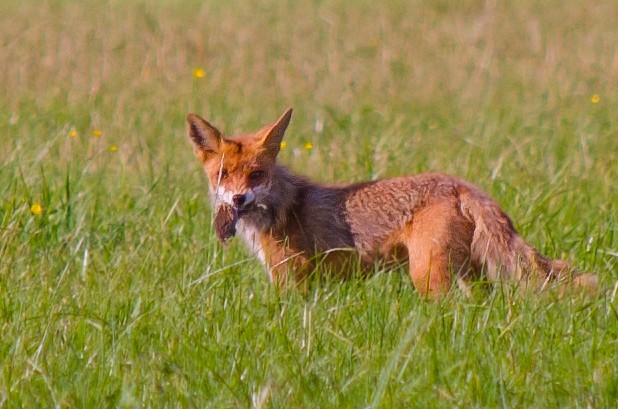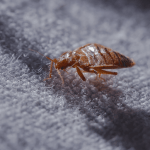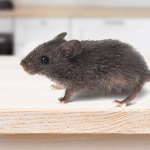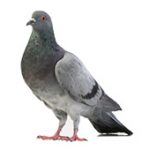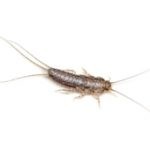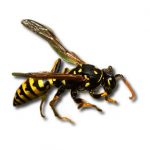Red Foxes in the UK: Behaviour, Habitat and Facts

Red foxes are the most popular fox species in the UK. The red fox (Vulpes vulpes) is one of the UK’s most iconic and adaptable mammals. Recognised by its reddish-brown fur, bushy tail, and sharp features, this cunning creature has carved out a unique place in both rural and urban environments.
From countryside fields to city streets, red foxes have demonstrated remarkable adaptability to changing landscapes and human interaction. In this article, we cover the main facts regarding British red foxes, their habitat and behaviour.
What Do Red Foxes Look Like?
Red foxes are easily recognised by their distinctive reddish-orange coat, but their appearance includes several key features that make them stand out among British wildlife:
- Fur colour: Their fur is predominantly rusty red, though some individuals may have darker or lighter variations. Their underside, chest, and throat are usually white or light grey.
- Tail: One of the most iconic features is their bushy tail, often tipped with white. The tail provides balance and acts as a warm wrap in cold weather.
- Legs and ears: Typically, their legs and back of the ears are black, offering a sharp contrast to their red coat.
- Face: Red foxes have a narrow, pointed muzzle and upright triangular ears, giving them a sharp, alert appearance.
- Size: Adult red foxes are similar in size to a small dog, measuring 60-90 cm in body length, with a tail of around 35-50 cm. Males are usually slightly larger than females.
- Eyes: Their eyes are almond-shaped and often golden or amber, with vertically slit pupils, ideal for night vision.
This striking appearance helps red foxes blend into woodland and rural landscapes, while also providing excellent camouflage in leaf litter, tall grass, and urban environments. Their canine teeth are relatively long. Also, their tails are longer than half of their bodies’ length. The weight of an adult fox ranges from 2.2-14 kg, with the females being lighter than the males.
Where Do Red Foxes Live?
If you’ve seen foxes on your property, you must have asked yourself the question “Where do red foxes live?” Red foxes’ habitat is diverse. They are present in several continents and because they are very adaptable, can live equally well in habitats such as forests, grasslands, mountains and even deserts. Over the last couple of years, they have also become used to urban areas and human presence.
In the wild, foxes dig burrows in the ground which are called ‘dens’. These dens are their homes and provide them with shelter from harsh weather and predators, food storage, sleep and a safe place to give birth to the young cubs.
In urban areas, they often make their dens under wooden constructions such as your shed and even your house.
They mark their territory by urinating and this is also a signal for their presence and a way to communicate with other foxes.
Red Fox Habitat
The red fox is a habitat generalist, meaning it can survive in a wide range of environments. In the UK, its habitats include:
- Countryside and farmland: Hedgerows, fields, and woodland edges are classic rural fox territories.
- Woodlands: Dens are often dug into banks or hidden among tree roots.
- Urban gardens and parks: Foxes have adapted to city life by sheltering under sheds, decking, or thick shrubbery.
- Coastal areas: Some populations thrive in wilder, remote environments.
Urban foxes frequently adapt their behaviour to exploit human-generated food sources. This includes scavenging from bins, feeding on discarded food, and hunting pigeons, rats, and small mammals in city parks. Despite these adaptations, foxes still rely on natural cover and safe denning sites to raise young.
What Do Red Foxes Eat?
Red foxes, like other species of their family, are omnivorous and opportunistic eaters. Their diet can range between meat and fruits, but they prefer meat. They hunt small mammals such as rats, mice, voles and often squirrels, plus rabbits and hares.
However, foxes are also a bit lazier than other animals who hunt for their food. That means they will feed on animals if they can easily catch them. This is also one of the reasons why foxes attack people’s poultry and rabbits. The animals are already in cages and have nowhere to run. If the fox can get access inside of the cage, you can be sure it will kill all your animals.
Foxes would also eat fallen fruit in the wild and in your garden. Other food that attracts them to your home is pet food, rats and mice if you have an infestation, and birds that feed in your bird feeders and water sources.
On rare occasions, if food is scarce, they may resolve to eat vegetables, fish, frogs, and even worms. And in an urban area, they can often be seen scavenging for food in garbage bins and eating food scraps.
Learn: How to get rid of foxes in your garden?
Are Red Foxes Aggressive?
Red foxes are not naturally aggressive towards humans. They are shy, avoiding direct contact unless provoked or habituated through regular feeding. Most interactions are peaceful, with foxes quietly foraging at night.
However, aggression may occur in territorial disputes between foxes, particularly during the breeding season in January and February. Urban foxes may also appear bold if they’ve been fed by humans, but this should not be mistaken for true aggression. When dealing with foxes in gardens, it’s best to avoid feeding them and instead use humane deterrents if necessary.
When Do Red Foxes Mate?
The mating season for red foxes begins in late December and continues until the end of March. Peak months for breeding are January and February. The female fox gives birth between March and April and the young ones start getting out of the den at about 12 weeks of age.
Foxes often live in pairs or in groups, they are solitary animals. However, during their mating season, once the male has chosen a vixen, both can be seen living and hunting together for a couple of days. Between one and six days, the female is in a period called estrus, which means that she is ready to be mated by the male.
After the pair has mated, the male will leave the female. Sometimes the males even go out to look for another female to mate with.
How Many Kits Do Red Foxes Have?
Like dogs, fox litters aren’t big. The most common case is a litter that consists of four to six kits. On rare occasions, usually in environments where the fox mortality rate is higher, bigger litters can be born. Some may even consist of up to 13 kits.
Are Red Foxes Endangered?
Currently, red foxes do not have such a status. The IUCN claims that the mammals’ population is stable and does not consider red foxes to be endangered. In fact, they also say that their highest population density is in the UK. Up to 30 red foxes per square 0.5km can exist. However, in the UK the red fox population has fallen by about 41% from 1995 until 2017.
There are several large threats to the red fox population, mainly habitat losses and fragmentations, plus exploitation and hunting. Habitat loss is the most serious of them all. Luckily for the species, they are very adaptable and can live in different conditions, which is also one of the reasons foxes have been regular visitors to urbanised areas and people’s yards. They come to look for food, which their natural habitat offers less of.
In the UK, there are some strict rules about dealing with foxes on your property and you can get a serious fine or even get jailed if you do not follow them.
Facts About Red Foxes
Here are several interesting facts about red foxes:
- “Are foxes dogs?” is one of the most commonly asked questions about foxes. And the answer is no, they are not dogs but they are from the Canidae family, as are jackals and wolves.
- Foxes, more specifically female foxes, are known to be great mothers. Their young ones live with them for about seven months during which the mothers are very protective of them.
- In many cultures and folklores worldwide, foxes are viewed as tricksters.
- Red foxes can run at about 50km/h.
- Hunting foxes was a sport in the UK but was banned in response to welfare concerns in 2002 in Scotland and 2004 in England and Wales.
- Foxes are more like cats than dogs because they can climb trees.
- Foxes are nocturnal creatures. They actively search for food at night and sleep during the day.
- These mammals rarely chew their food. Smaller rodents or fruit are swallowed whole.
- Unfortunately, in the wild, the cubs’ mortality rate is high due to various reasons, such as starvation, predators, freezing temperatures, etc.
Takeaways
- Foxes are not classified as a pest in the UK.
- Red foxes are not categorised as endangered species.
- They may build their den under your house, which comes with several nuisances.
- Foxes can jump over 1m tall fences, so you should protect your poultry or rabbits better if you have any.
- There are strict rules for fox control in the UK.
- You may be fined or jailed for mistreating red foxes, or any other foxes.




